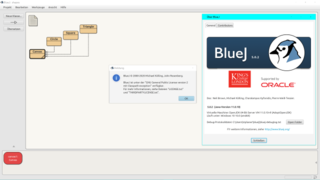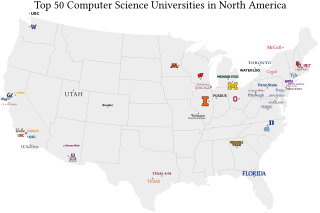Related Research Articles
A teaching method is a set of principles and methods used by teachers to enable student learning. These strategies are determined partly on subject matter to be taught, partly by the relative expertise of the learners, and partly by constraints caused by the learning environment. For a particular teaching method to be appropriate and efficient it has take into account the learner, the nature of the subject matter, and the type of learning it is supposed to bring about.
Science education is the teaching and learning of science to school children, college students, or adults within the general public. The field of science education includes work in science content, science process, some social science, and some teaching pedagogy. The standards for science education provide expectations for the development of understanding for students through the entire course of their K-12 education and beyond. The traditional subjects included in the standards are physical, life, earth, space, and human sciences.
Instructional scaffolding is the support given to a student by an instructor throughout the learning process. This support is specifically tailored to each student; this instructional approach allows students to experience student-centered learning, which tends to facilitate more efficient learning than teacher-centered learning. This learning process promotes a deeper level of learning than many other common teaching strategies.
Situated cognition is a theory that posits that knowing is inseparable from doing by arguing that all knowledge is situated in activity bound to social, cultural and physical contexts.

BlueJ is an integrated development environment (IDE) for the Java programming language, developed mainly for educational purposes, but also suitable for small-scale software development. It runs with the help of Java Development Kit (JDK).

Constructivism in education is a theory that suggests that learners do not passively acquire knowledge through direct instruction. Instead, they construct their understanding through experiences and social interaction, integrating new information with their existing knowledge. This theory originates from Swiss developmental psychologist Jean Piaget's theory of cognitive development.
Culturally relevant teaching is instruction that takes into account students' cultural differences. Making education culturally relevant is thought to improve academic achievement, but understandings of the construct have developed over time Key characteristics and principles define the term, and research has allowed for the development and sharing of guidelines and associated teaching practices. Although examples of culturally relevant teaching programs exist, implementing it can be challenging.
An intelligent tutoring system (ITS) is a computer system that imitates human tutors and aims to provide immediate and customized instruction or feedback to learners, usually without requiring intervention from a human teacher. ITSs have the common goal of enabling learning in a meaningful and effective manner by using a variety of computing technologies. There are many examples of ITSs being used in both formal education and professional settings in which they have demonstrated their capabilities and limitations. There is a close relationship between intelligent tutoring, cognitive learning theories and design; and there is ongoing research to improve the effectiveness of ITS. An ITS typically aims to replicate the demonstrated benefits of one-to-one, personalized tutoring, in contexts where students would otherwise have access to one-to-many instruction from a single teacher, or no teacher at all. ITSs are often designed with the goal of providing access to high quality education to each and every student.
Design thinking refers to the set of cognitive, strategic and practical procedures used by designers in the process of designing, and to the body of knowledge that has been developed about how people reason when engaging with design problems.
Computer-supported collaborative learning (CSCL) is a pedagogical approach wherein learning takes place via social interaction using a computer or through the Internet. This kind of learning is characterized by the sharing and construction of knowledge among participants using technology as their primary means of communication or as a common resource. CSCL can be implemented in online and classroom learning environments and can take place synchronously or asynchronously.

Michael Kölling is a German computer scientist, currently working at King's College London, best known for the development of the BlueJ and Greenfoot educational development environments and as author of introductory programming textbooks. In 2013 he received the SIGCSE Award for Outstanding Contribution to Computer Science Education for the development of the BlueJ.
Inquiry-based learning is a form of active learning that starts by posing questions, problems or scenarios. It contrasts with traditional education, which generally relies on the teacher presenting facts and their knowledge about the subject. Inquiry-based learning is often assisted by a facilitator rather than a lecturer. Inquirers will identify and research issues and questions to develop knowledge or solutions. Inquiry-based learning includes problem-based learning, and is generally used in small-scale investigations and projects, as well as research. The inquiry-based instruction is principally very closely related to the development and practice of thinking and problem-solving skills.

Open education is an educational movement founded on openness, with connections to other educational movements such as critical pedagogy, and with an educational stance which favours widening participation and inclusiveness in society. Open education broadens access to the learning and training traditionally offered through formal education systems and is typically offered through online and distance education. The qualifier "open" refers to the elimination of barriers that can preclude both opportunities and recognition for participation in institution-based learning. One aspect of openness or "opening up" education is the development and adoption of open educational resources in support of open educational practices.
Computational thinking (CT) refers to the thought processes involved in formulating problems so their solutions can be represented as computational steps and algorithms. In education, CT is a set of problem-solving methods that involve expressing problems and their solutions in ways that a computer could also execute. It involves automation of processes, but also using computing to explore, analyze, and understand processes.

Computer science education or computing education is the field of teaching and learning the discipline of computer science, and computational thinking. The field of computer science education encompasses a wide range of topics, from basic programming skills to advanced algorithm design and data analysis. It is a rapidly growing field that is essential to preparing students for careers in the technology industry and other fields that require computational skills.
Multiliteracy is an approach to literacy theory and pedagogy coined in the mid-1990s by the New London Group. The approach is characterized by two key aspects of literacy – linguistic diversity and multimodal forms of linguistic expressions and representation. It was coined in response to two major changes in the globalized environment. One such change was the growing linguistic and cultural diversity due to increased transnational migration. The second major change was the proliferation of new mediums of communication due to advancement in communication technologies e.g the internet, multimedia, and digital media. As a scholarly approach, multiliteracy focuses on the new "literacy" that is developing in response to the changes in the way people communicate globally due to technological shifts and the interplay between different cultures and languages.
Challenge-based learning (CBL) is a framework for learning while solving real-world Challenges. The framework is collaborative and hands-on, asking all participants to identify Big Ideas, ask good questions, discover and solve Challenges, gain in-depth subject area knowledge, develop 21st-century skills, and share their thoughts with the world.
One of the most visible approaches to peer learning comes out of cognitive psychology, and is applied within a "mainstream" educational framework: "Peer learning is an educational practice in which students interact with other students to attain educational goals." Other authors including David Boud describe peer learning as a way of moving beyond independent to interdependent or mutual learning among peers. In this context, it can be compared to the practices that go by the name cooperative learning. However, other contemporary views on peer learning relax the constraints, and position "peer-to-peer learning" as a mode of "learning for everyone, by everyone, about almost anything." Whether it takes place in a formal or informal learning context, in small groups or online, peer learning manifests aspects of self-organization that are mostly absent from pedagogical models of teaching and learning.

The Technological Pedagogical Content Knowledge (TPACK) framework is an educational model that describes the intersections between technology, pedagogy, and content for the effective integration of technology into teaching. TPACK became popular in the early 2000s.

Danish computer scientist Michael Edelgaard Caspersen has spent his academic life furthering computer science education, at all levels. His research interests are computing education, programming didactics, programming methodology, and object-oriented programming. He is best known for his work on computing education research and development, particularly his work to promote informatics as a fundamental discipline for all.
References
- Bennedsen, Jens (June 2006). "The dissemination of pedagogical patterns". Computer Science Education. 16 (2): 119–136. doi:10.1080/08993400600733590. S2CID 12582991.
- Bennedsen, Jens; Eriksen, Ole (June 2006). "Categorizing pedagogical patterns by teaching activities and pedagogical values". Computer Science Education. 16 (2): 157–172. doi:10.1080/08993400600768091. S2CID 205613486.
- Conole, Gráinne (2013). "Pedagogical patterns". Designing for learning in an open world. Explorations in the learning sciences, instructional systems and performance technologies. Vol. 4. New York: Springer-Verlag. pp. 40–43. doi:10.1007/978-1-4419-8517-0_3. ISBN 9781441985163. OCLC 731915958.
- Derntl, Michael; Botturi, Luca (June 2006). "Essential use cases for pedagogical patterns". Computer Science Education. 16 (2): 137–156. doi:10.1080/08993400600768182. S2CID 37426541.
- Fincher, Sally (September 1999). "Analysis of design: an exploration of patterns and pattern languages for pedagogy". Journal of Computers in Mathematics and Science Teaching. 18 (3): 331–348.
- Goodyear, Peter (March 2005). "Educational design and networked learning: patterns, pattern languages and design practice". Australasian Journal of Educational Technology . 21 (1): 82–101. doi: 10.14742/ajet.1344 .
- Haberman, Bruria (June 2006). "Pedagogical patterns: a means for communication within the CS teaching community of practice". Computer Science Education. 16 (2): 87–103. doi:10.1080/08993400600786994. S2CID 23011626.
- Hubscher, Roland; Frizell, Sherri (2002). "Aligning theory and web-based instructional design practice with design patterns". In Driscoll, Margaret; Reeves, Thomas C. (eds.). E-Learn 2002: world conference on e-learning in corporate, government, healthcare & higher education. Chesapeake, VA: Association for the Advancement of Computing in Education (AACE). pp. 298–304. ISBN 9781880094464. OCLC 61510840.
- Jones, David; Stewart, Sharonn; Power, Leonie (1999). "Patterns: using proven experience to develop online learning" (PDF). In Winn, Jenny (ed.). ASCILITE'99: responding to diversity: proceedings from the 16th annual conference of the Australasian Society for Computers in Learning in Tertiary Education (ASCILITE), December 5–8, 1999. Brisbane: Teaching and Learning Support Services, Queensland University of Technology. pp. 155–162. OCLC 223117208.
- Laurillard, Diana (2012). Teaching as a design science: building pedagogical patterns for learning and technology. New York: Routledge. doi:10.4324/9780203125083. ISBN 9780415803854. OCLC 754518543.
- Mor, Yishay; Mellar, Harvey; Warburton, Steven; Winters, Niall (2014). Practical design patterns for teaching and learning with technology. Trails in education. Vol. 8. Rotterdam: Sense Publishers. doi:10.1007/978-94-6209-530-4. ISBN 9789462095298. OCLC 876802735.
- Scott, Bernard; Shurville, Simon; Maclean, Piers; Cong, Chunyu (January 2007). "Cybernetic principles for learning design". Kybernetes . 36 (9/10): 1497–1514. doi:10.1108/03684920710827445. In this article, pedagogical patterns are called learning design patterns.
- Sharp, Helen; Manns, Mary Lynn; Eckstein, Jutta (December 2003). "Evolving pedagogical patterns: the work of the Pedagogical Patterns Project". Computer Science Education. 13 (4): 315–330. doi:10.1076/csed.13.4.315.17493. S2CID 3473870.